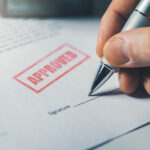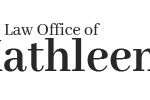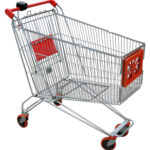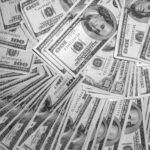
by Kathleen Lynch | Nov 24, 2015 | IP Management
There was an interesting article yesterday in the Wall Street Journal about patent demand letters. These are letters sent alleging patent infringement and demanding a cessation in all infringing activity usually followed by a request for a payment. The author, Colleen Chien, proposes that sometimes the best thing to do is nothing at all.
The article discusses the tactics of patent trolls, competitors and “patent bullies” and how they may strategically pursue one or more parties for infringement. In some cases, where a patent troll or patent owner trying to test the waters may send out demand letters to obtain settlements from a number of parties. However, Ms. Chien also points out that there are times that a patent holder may want to litigate in an effort to obtain a large damage award in a jury trial.
One thing Ms. Chien doesn’t address is the merits of the demand letter. When you receive a letter alleging patent infringement, do the allegations have any merit? A “do nothing” response may set you up for a patent infringement suit that may have been avoidable.
What’s the take away here? You are better off having a patent demand letter reviewed by patent counsel to address the merits of the accusation. Then you can make an informed decision as to whether the substantive allegations in the letter deserve a response.
Protecting your innovative developments is critical to any organization. Having the right person to help you make that decision is important. The Law Office of Kathleen Lynch PLLC is designed to help businesses such as yours keep ahead of the game. The first telephone consultation is free. Email us at [email protected].

by Kathleen Lynch | Oct 7, 2015 | Entrepreneurship
Socrates once said “the way to a good reputation is to be what you desire to appear.” For one man, he wanted to be a named inventor.
In an action against his former employer, Seagate, Mr. Shukh filed an action in federal district court charging that his reputation was harmed by Seagate’s failure to include him as an inventor on 6 Seagate patents. The district court dismissed the action finding that Mr. Shukh did not provide sufficient evidence to support his case. However, the Federal Circuit Court of Appeals that hears patent cases, vacated the lower court’s decision. The court found that “being considered an inventor of important subject matter is a mark of success in one’s field comparable to being an author of an important scientific paper.”
What’s the take away here? If you are an inventor, and you are not identified as such on a patent application or issued patent, you may have a case against your employer based on harm to your reputation. As the court stated, if you are correctly an inventor of important subject matter, being recognized as such is a mark of professional success. Failure to be properly included as an inventor may harm one’s reputation which may be actionable.
Capitalizing on innovative developments is critical to any organization. Having the right person to help you make those decisions is important. The Law Office of Kathleen Lynch PLLC is designed to help businesses such as yours keep ahead of the game. The first telephone consultation is free. Email us at [email protected].

by Kathleen Lynch | Sep 15, 2015 | IP Management, Patent Prosecution
The other day I was speaking to a business owner. She regretted not seeking patent protection sooner and more often for various innovations developed by her company. When we discussed average costs, she was surprised that the costs were considerably lower than what she thought they would be.
Provisional patent preparation and filing costs will depend on the approach you take to filing. There are basically two approaches to provisional patent filing. The first is the “cheap and cheerful” approach that requires that basic structure and function of the invention be communicated in the application with appropriate drawings, photos, and/or data or other relevant information.
The second provisional filing approach is to treat the provisional the same as a utility application. This means that the application will be written in a more formal, structured style as required for utility applications, including a set of claims, formal drawings, etc. The cheap and cheerful application can be free if you file it yourself. The US Patent and Trademark Office website has an inventor assistance center that provides basic information and help with filling out patent filing forms. Costs for provisional applications range from free if you do it yourself to an average of $4000, according to the American Intellectual Property Law Association (AIPLA). I think this figure is high and would recommend shopping around. See my previous post on selecting the right patent attorney for your invention.
Regular utility applications will cost more because they are more formal in nature and require drawings that comply with the U.S. Patent Office rules. However, if you go the more formal route first and file your provisional application as if it were a utility, then you only incur the cost once, except for additions and/or changes. Memories fade and attentions turn to other priorities. I believe the best approach is to prepare your provisional one time. In the long run, if there are few additions or changes, the cost is less than doing it twice. The average cost of a utility application is $7000 according to the AIPLA. Again, I would get more than one estimate and look at smaller firms and locations in areas where the cost of living is less.
At the end of the day, if you are self financing, it is still a significant spend. However, if your patentable innovation is at the core of your business, you can’t afford not to seek protection.
What’s the take away here? Don’t write off your ability to protect your invention with a patent before speaking to at least two or more patent professionals. Protecting your innovative developments is critical to any organization. Having the right person to help you make that decision is important. The Law Office of Kathleen Lynch PLLC is designed to help businesses such as yours keep ahead of the game. The first telephone consultation is free. Email us at [email protected].

by Kathleen Lynch | Aug 18, 2015 | Entrepreneurship, Innovation, Patent Prosecution
Recently I’ve found websites and blog posts promoting your ability to conduct your own patent search. Unless your invention is extremely straightforward, I would not recommend doing that.
The U.S. Patent Office was created in 1802. As such, issued patents were organized by categories or classes and subclasses. As innovation has evolved, the categories of classes and subclasses has evolved and changed considerably. Unless you are extremely familiar with the patent records organization, you are better off spending your money on a professional searcher who will find all of the relevant categorical nooks and crannies. Often times a material, process or structure in your invention may have applicability in areas you have not considered. These need to be identified and pursued in order to obtain a full and thorough search.
Patentability must be based on a complete search to have value. If not, you are spending good money after bad by investing in the preparation and filing of a patent application based on incomplete patent search results. You are better off knowing that your invention is unpatentable than spending money on the preparation and filing of a meaningless application. In addition, your application, and particularly your claims, can be tailored to that patentable space defined not only by your invention but by the relevant prior art found in a good search.
Capitalizing on innovative developments is critical to any organization. Having the right person to help you make those decisions is important. The Law Office of Kathleen Lynch PLLC is designed to help businesses such as yours keep ahead of the game. The first telephone consultation is free. Email us at [email protected].

by Kathleen Lynch | Jul 14, 2015 | Innovation
A California jury awarded a cardiologist $200 million dollars against Boston Scientific. The jury heard the patent infringement and licensing lawsuit filed by Dr. David Jang who developed two cardiac stents for Boston Scientific. The jury found in favor of Dr. Jang and awarded him $200 million dollars in damages. The jury determined that the medical device company breached its contract with Dr. Jang and infringed two patent claims.
In 2002, Dr. Jang licensed two stent patents to Boston Scientific in exchange for $50 million upfront and an additional $110 million contingent on sales of stents that incorporate his patents. In 2005, Dr. Jang sued Boston Scientific for breaching the license agreement and claimed that Boston Scientific failed to make payments required by the terms of the agreement. Dr. Jang alleged the company owed him just under $100 million for using his patented products, and with interest at about 12 percent a year, would bring that amount to more than $200 million.
What’s the take away here? First, a patent is only as good as your ability to enforce it. Here, the good doctor was able to stand his ground against a large opponent and prevail. Second, your ability to prevail in an infringement action may take longer than you would ever want. But patience may be a virtue in patent infringement actions, especially if the facts favor your cause.
Protecting your innovative developments is critical to any organization. Having the right person to help you through that process is important. The Law Office of Kathleen Lynch PLLC is designed to help businesses such as yours keep ahead of the game. The first telephone consultation is free. Email us at [email protected].
Page 3 of 6«12345...»Last »







